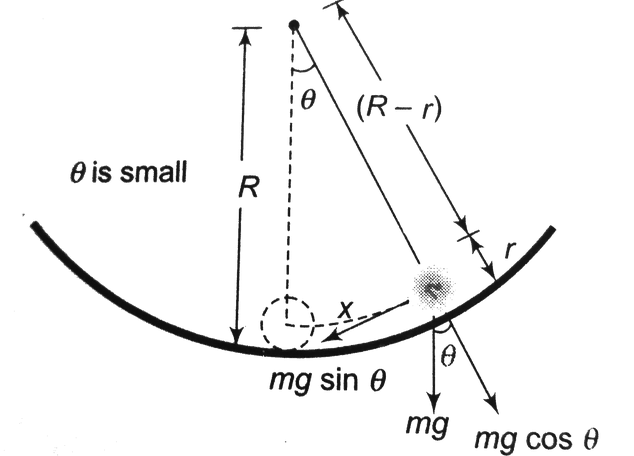
Answer
91.5k+ views
Hint: We know that angular acceleration is the change in angular velocity divided by time, while tangential acceleration is the change in linear velocity divided by time. People sometimes forget that angular acceleration does not change with radius, but tangential acceleration does. Acceleration is a change in velocity, either in its magnitude that is speed or in its direction, or both. In uniform circular motion, the direction of the velocity changes constantly, so there is always an associated acceleration, even though the speed might be constant.
Complete step by step answer
The diagram for the given question is given as:

We know that the concept of tangential acceleration is used to measure the change in the tangential velocity of a point with a specific radius with the change in time. Tangential acceleration is defined as the rate of change of tangential velocity of the matter in the circular path.
We know that tangential acceleration, $a_{1}=-g \sin \theta=-g \theta$
$-\quad a_{1}=-g^{\prime} \dfrac{x}{(R-r)}$
Motion is SHM is with time period $T=2 \pi \sqrt{\dfrac{\text { displacement }}{\text { acceleration }}}=2 \pi \sqrt{\dfrac{x}{\dfrac{g x}{(R-r)}}}=2 \pi \sqrt{\dfrac{R-r}{g}}$
So, the correct answer is option B.
Note: We can say that in physics, circular motion is a movement of an object along the circumference of a circle or rotation along a circular path. Since the object's velocity vector is constantly changing direction, the moving object is undergoing acceleration by a centripetal force in the direction of the center of rotation. Any time the speed of an object is changing, it has an acceleration. Angular acceleration is defined as the rate at which the angular velocity is changing. If the Ferris wheel speeds up at a constant rate, then we would say that the angular acceleration is constant.
Complete step by step answer
The diagram for the given question is given as:

We know that the concept of tangential acceleration is used to measure the change in the tangential velocity of a point with a specific radius with the change in time. Tangential acceleration is defined as the rate of change of tangential velocity of the matter in the circular path.
We know that tangential acceleration, $a_{1}=-g \sin \theta=-g \theta$
$-\quad a_{1}=-g^{\prime} \dfrac{x}{(R-r)}$
Motion is SHM is with time period $T=2 \pi \sqrt{\dfrac{\text { displacement }}{\text { acceleration }}}=2 \pi \sqrt{\dfrac{x}{\dfrac{g x}{(R-r)}}}=2 \pi \sqrt{\dfrac{R-r}{g}}$
So, the correct answer is option B.
Note: We can say that in physics, circular motion is a movement of an object along the circumference of a circle or rotation along a circular path. Since the object's velocity vector is constantly changing direction, the moving object is undergoing acceleration by a centripetal force in the direction of the center of rotation. Any time the speed of an object is changing, it has an acceleration. Angular acceleration is defined as the rate at which the angular velocity is changing. If the Ferris wheel speeds up at a constant rate, then we would say that the angular acceleration is constant.
Recently Updated Pages
Name the scale on which the destructive energy of an class 11 physics JEE_Main

Write an article on the need and importance of sports class 10 english JEE_Main

Choose the exact meaning of the given idiomphrase The class 9 english JEE_Main

Choose the one which best expresses the meaning of class 9 english JEE_Main

What does a hydrometer consist of A A cylindrical stem class 9 physics JEE_Main

A motorcyclist of mass m is to negotiate a curve of class 9 physics JEE_Main

Other Pages
The vapour pressure of pure A is 10 torr and at the class 12 chemistry JEE_Main

Electric field due to uniformly charged sphere class 12 physics JEE_Main

3 mole of gas X and 2 moles of gas Y enters from the class 11 physics JEE_Main

If a wire of resistance R is stretched to double of class 12 physics JEE_Main

Derive an expression for maximum speed of a car on class 11 physics JEE_Main

Velocity of car at t 0 is u moves with a constant acceleration class 11 physics JEE_Main



